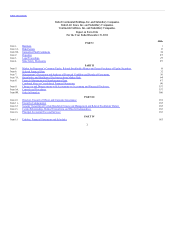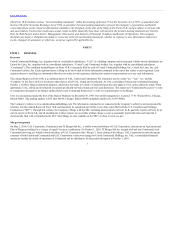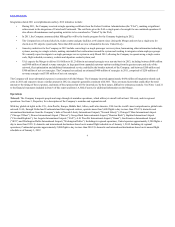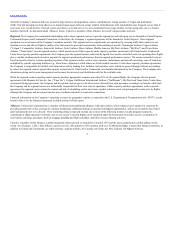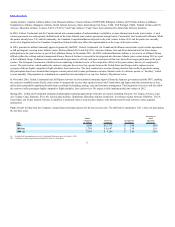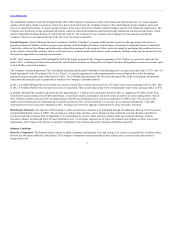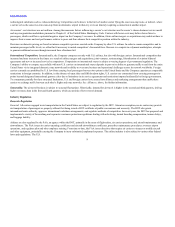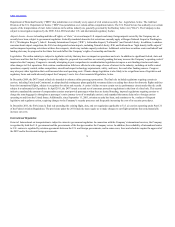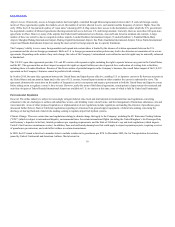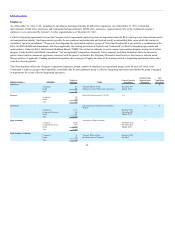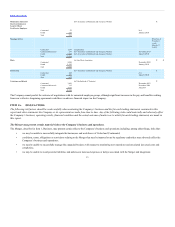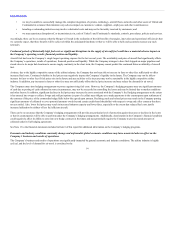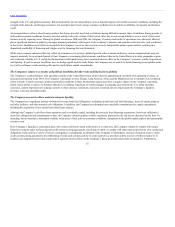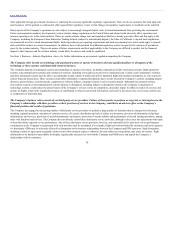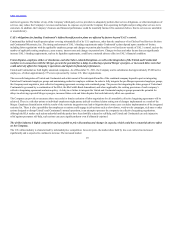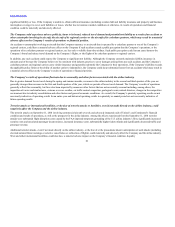United Airlines 2011 Annual Report Download - page 12
Download and view the complete annual report
Please find page 12 of the 2011 United Airlines annual report below. You can navigate through the pages in the report by either clicking on the pages listed below, or by using the keyword search tool below to find specific information within the annual report.
Table of Contents
the United Kingdom challenging regulations that transpose into UK law the EU ETS as applied to U.S. carriers (the United Kingdom being the specific
“implementing country” designated to implement the EU ETS requirements as they apply to these carriers). The case was referred to the Court of Justice of the
European Union (“CJEU”) and, on December 21, 2011, the CJEU issued an opinion that upheld the EU ETS. More than forty non-EU countries have gone
on record opposing the scheme and based upon this significant international dispute, it is unclear whether or not the inclusion of aviation in the EU ETS will
be sustained. If the scheme continues, it will increase the cost of carriers operating in the EU by requiring the purchase of carbon credits, although the precise
cost to the Company is difficult to calculate with certainty due to a number of variables including the Company’s future carbon emissions with respect to
flights to and from the EU and the price of carbon credits. Management continues to evaluate what the impact would be for the Company in 2012.
While the EU ETS is being disputed, the Company has met and continues to meet its compliance obligations under the scheme including implementation in
2010 of detailed requirements for monitoring and reporting of emissions of carbon dioxide. As of January 1, 2012, the EU ETS required the Company to
ensure that by each compliance date, it has obtained sufficient emission allowances equal to the amount of carbon dioxide emissions with respect to flights to
and from EU member states in the preceding calendar year. Such allowances are to be surrendered on an annual basis to the relevant government with an initial
compliance date of April 30, 2013 for emissions subject to the EU ETS in 2012. For 2012, the Company estimates it will receive from the United Kingdom
allowances equal to approximately 80% of the Company’s carbon emissions relative to the 2010 base year, leaving a remaining amount that will need to be
purchased by the Company. The amount of such allowances provided by the United Kingdom is expected to decrease in future years, potentially leaving a
greater amount of allowances that may be required to be purchased. Additionally, any increase in the amount of such carbon emissions would require the
purchase of additional carbon allowances by the Company.
The International Civil Aviation Organization (“ICAO”) is in the process of developing a regulatory program for international aviation greenhouse gas
emissions, with the intent to reach international agreement that the ICAO program would replace regional schemes such as the EU ETS. Without an
international agreement, there could be other regulatory actions taken in the future by the U.S. government, state governments within the U.S., or foreign
governments, to regulate the emission of greenhouse gases by the aviation industry, which could result in multiple schemes applying to the same emissions.
The precise nature of any such requirements and their applicability to the Company are difficult to predict, but the financial impact to the Company and the
aviation industry would likely be adverse and could be significant, including the potential for increased fuel costs, carbon taxes or fees, or a requirement to
purchase carbon credits.
The Company is taking various actions to reduce its carbon emissions through fleet renewal, aircraft retrofits, and actions that are establishing the foundation
for the commercialization of aviation biofuels.
Some U.S. and foreign airports have established airport restrictions to limit noise, including restrictions on aircraft types to be
used and limits on the number and scheduling of hourly or daily operations. In some instances, these restrictions have caused curtailments in services or
increased operating costs, and could limit our ability to expand our operations at the affected airports.
The airline industry is also subject to other environmental laws and regulations that require the Company to remediate soil or groundwater to meet certain
objectives and which may require significant expenditures. Under the federal Comprehensive Environmental Response, Compensation and Liability Act,
commonly known as “Superfund,” and similar environmental cleanup laws, generators of waste materials and owners or operators of facilities can be subject
to liability for investigation and remediation costs at locations that have been identified as requiring response actions. The Company also conducts voluntary
environmental assessment and remediation actions. Environmental cleanup obligations can arise from, among other circumstances, the operation of aircraft
fueling facilities and primarily involve airport sites. Future costs associated with these activities are currently not expected to have a material adverse effect on
the Company’s business.
11



